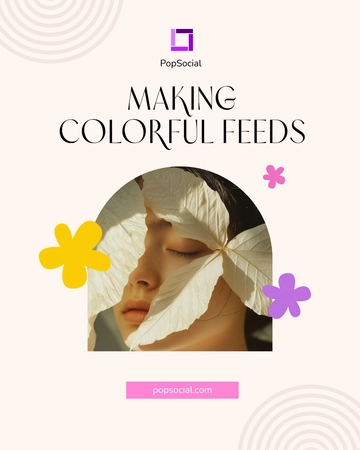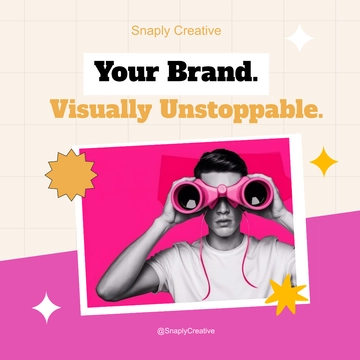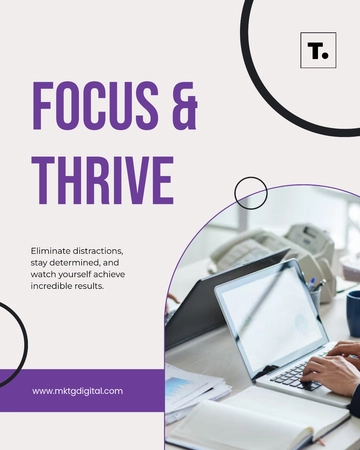Free Go-to-Market Social Media Strategy

I. Executive Summary
[Your Company Name] is an innovative smart water bottle designed to help users monitor their daily hydration levels through a connected mobile app. The bottle features real-time hydration tracking, customizable reminders, and an eco-friendly design, appealing to both fitness enthusiasts and tech lovers. This Go-to-Market (GTM) strategy will focus on creating awareness, generating leads, and driving product sales through targeted social media campaigns, influencer partnerships, and paid advertisements.
A. Overview of the Product/Service
[Your Company Name] is a sleek, high-tech water bottle that integrates with a mobile app to track hydration in real-time. It features smart notifications that remind users to drink water based on their activity level, personal goals, and weather conditions. The product is eco-friendly, made from sustainable materials, and designed for durability, making it a perfect choice for those who prioritize health and sustainability.
B. Purpose of the Strategy
The purpose of this social media strategy is to launch [Your Company Name] successfully across key markets by leveraging digital platforms. We aim to increase brand awareness, build an engaged online community, and drive conversions via targeted content and paid promotions. This strategy will also focus on differentiating [Your Company Name] from competitors by emphasizing its smart features and eco-friendly design.
C. Goals and Objectives
Our primary goal is to achieve [00] product impressions across social platforms in the first month of launch. We aim to generate [00] website visits and convert at least [00]% of that traffic into paying customers. Additionally, we plan to build long-term brand loyalty by fostering a community of active users who engage with the brand through social content and user-generated posts.
II. Market Research & Audience Insights
A. Target Audience Analysis
Our primary target audience is fitness enthusiasts and tech-savvy individuals aged 25-45, predominantly located in urban areas where wellness and smart technology products are in high demand. They are likely to have disposable income and prioritize health, making them ideal customers for a product like [Your Company Name]. Furthermore, they are active on social media, especially platforms like Instagram and TikTok, where wellness, fitness, and lifestyle trends are popular topics of conversation.
B. Competitor Analysis
We analyzed the social media presence of key competitors like [Competitor A], [Competitor B], and [Competitor C]. Each competitor has a strong visual presence, particularly on Instagram and Facebook, where they highlight their product features and eco-friendly aspects. However, their content focuses heavily on product features rather than personalized user experience, giving [Your Company Name] an opportunity to stand out by emphasizing customization and real-time tracking as its unique selling points.
C. Market Trends
Consumers are increasingly shifting towards products that combine health benefits with sustainability. Smart water bottles like [Your Company Name] fit well into the rising trend of health-tech wearables, driven by individuals who want data-driven insights into their well-being. Additionally, there is a growing demand for eco-friendly products, with over [00]% of consumers preferring to purchase sustainable items, particularly in the wellness and fitness industries.
III. Social Media Platform Strategy
A. Platform Selection
We selected platforms that align with the behaviors and interests of our target audience, focusing on visual and engagement-driven social media channels. Instagram is ideal for showcasing [Your Company Name]’s design, user lifestyle content, and partnerships with fitness influencers. TikTok will allow us to create engaging short-form content like product demos, while Facebook will serve as a platform for community engagement and targeted ads. LinkedIn will be used to highlight the product’s innovation, targeting tech professionals and wellness companies.
B. Platform-Specific Goals
Each platform will serve a different role in our GTM strategy, contributing to overall brand awareness and conversions. On Instagram, we aim to generate [00] impressions in the first month by posting high-quality visuals and working with influencers. On TikTok, we aim for 1 million views of our product demos and unboxing videos, as short-form video content tends to go viral. On Facebook, our goal is to achieve [00] link clicks through highly targeted ad campaigns. LinkedIn will be used to network with [00] professionals interested in health-tech innovations.
IV. Content Strategy
A. Messaging and Positioning
The core messaging for [Your Company Name] focuses on the balance between innovation and wellness, emphasizing how the product can help users stay on top of their hydration goals. Our messaging will be tailored to fit each platform, with Instagram focusing on lifestyle and aesthetics, TikTok emphasizing product demos and user-generated content, and Facebook highlighting product benefits through informative posts and infographics. The tone will be motivational, encouraging users to lead healthier, more sustainable lives with [Your Company Name].
Sample Messaging:
Instagram: "Stay hydrated and healthy with [Your Company Name]. Track your hydration levels and get personalized reminders throughout the day. #HydrateWith[Your Company Name]"
TikTok: "Never forget to drink water again! Watch how [Your Company Name] keeps you on track with real-time hydration alerts."
Facebook: "Did you know staying hydrated boosts energy and improves concentration? [Your Company Name] helps you track your daily water intake seamlessly."
B. Content Types and Formats
We will produce a mix of content to engage users across platforms. Instagram will feature visually appealing posts and user testimonials via Stories and Reels. TikTok will host creative, short-form videos such as unboxing clips, hydration challenges, and influencer reviews. Facebook will offer a mix of infographics on the health benefits of hydration and carousel ads. LinkedIn content will highlight product innovation, presenting [Your Company Name] as a leader in health-tech.
C. Content Calendar (Sample for First Week)
Day | Platform | Content | Goal |
|---|---|---|---|
Monday | Behind-the-Scenes (Production) Story | Build brand interest | |
Tuesday | TikTok | Product Demo (How it works) | Raise awareness |
Wednesday | Infographic (Hydration Benefits) | Educate audience | |
Thursday | User Testimonial Reel | Build trust | |
Friday | Article (Health-Tech Innovation) | Engage tech and health sectors |
V. Influencer and Partnership Strategy
A. Identifying Influencers and Key Opinion Leaders
We will target influencers in the fitness, wellness, and tech spaces who have a loyal following and regularly engage with their audience. These influencers will resonate with our target demographic, which is active on platforms like Instagram and TikTok, and will help drive authentic conversations around [Your Company Name].
B. Collaboration Plan
We will work with influencers to create unboxing videos, product demos, and challenge-based content that encourages user interaction. Sponsored posts will feature reviews and testimonials, while influencers will also lead fitness challenges where followers use [Your Company Name] to track hydration during workouts.
C. Tracking and Managing Influencer Engagement
We will use tools like Upfluence and HypeAuditor to track the performance of influencer campaigns. Metrics such as reach, engagement, and conversions will be closely monitored to optimize future partnerships and ensure we meet our KPIs.
VI. Paid Social Media Advertising Strategy
A. Advertising Goals
Our paid social campaigns will aim to drive brand awareness, website traffic, and conversions through targeted ads. We will focus on generating [00] impressions across Instagram, TikTok, and Facebook in the first 30 days, with an expected click-through rate (CTR) of [00]% and a conversion rate of [00]%.
B. Budget Allocation
We will allocate the majority of the budget to Instagram and TikTok, where our target demographic is most active, with Facebook serving as a platform for retargeting and driving conversions. A small portion of the budget will go to LinkedIn for professional networking and showcasing the innovation behind [Your Company Name].
Platform | Amount | Purpose |
|---|---|---|
$[00] | Awareness, engagement | |
TikTok | $[00] | Awareness, virality |
$[00] | Retargeting, website traffic | |
$[00] | Professional outreach, thought leadership |
C. Targeting and Audience Segmentation
We will use highly specific audience targeting based on user interests such as fitness, wellness, sustainability, and technology. We will also create lookalike audiences based on existing customer data to reach potential customers who share similar characteristics.
Audience Type | Targeting Criteria |
|---|---|
Fitness Enthusiasts | Interests: fitness, wellness, workout gear |
Tech-Savvy Users | Interests: smart devices, health-tech |
Eco-Friendly Shoppers | Interests: sustainability, eco-products |
D. Ad Formats
Our ad strategy will leverage visually compelling formats like carousel ads, video ads, and interactive polls. Carousel ads will be used on Facebook and Instagram to highlight multiple product features, while TikTok will focus on video ads that demonstrate product usage in creative ways.
VII. Engagement and Community Management
A. Social Listening and Monitoring
We will employ social listening tools such as Hootsuite and Sprout Social to monitor conversations around [Your Company Name]. These tools will help us stay on top of customer feedback, respond to queries in real time, and identify potential user-generated content.
B. Response Strategy for Audience Interaction
To build a loyal community, our community management team will respond to comments, messages, and mentions within 24 hours. For customer service inquiries, we will have a dedicated team ready to resolve issues quickly and provide follow-up to enhance customer satisfaction.
C. Building a Loyal Community
We will launch a hashtag campaign #HydrateWith[Your Company Name] to encourage users to share their hydration journey with the product. In addition to engaging users through contests and giveaways, we will spotlight user-generated content on our social channels, fostering a sense of community and loyalty.
VIII. Metrics, KPIs, and Performance Evaluation
A. Key Performance Indicators (KPIs)
To measure the success of our GTM strategy, we will track KPIs such as engagement rate, reach, impressions, click-through rate (CTR), and conversion rate. These metrics will provide insights into which platforms and content types are driving the most engagement and sales.
KPI | Target Metric |
|---|---|
Engagement Rate | [00]% engagement per post on Instagram |
Reach | [00] total reach on TikTok in month 1 |
CTR | [00]% average CTR on Facebook Ads |
Conversion Rate | [00]% conversion rate on website traffic |
B. Tools for Tracking Performance
We will utilize both native social media analytics tools and third-party platforms like Google Analytics and Sprout Social to track campaign performance. This will allow us to make data-driven decisions, adjust our strategy in real-time, and ensure we are on track to meet our goals.
C. Reporting and Optimization
We will produce weekly and monthly reports summarizing key metrics and campaign performance. Based on the data, we will optimize our content calendar, influencer partnerships, and paid ad placements to maximize ROI and improve underperforming areas.
Reporting Frequency | Purpose |
|---|---|
Weekly Report | Track ongoing campaign performance |
Monthly Report | Deep dive into metrics and KPIs |
Quarterly Review | Long-term strategy optimization |
IX. Timeline and Milestones
A. Key Phases (Pre-Launch, Launch, Post-Launch)
Our strategy will be broken down into three phases: Pre-Launch, where we will create hype and build a community, Launch, focused on driving awareness and engagement, and Post-Launch, where we will nurture our audience and convert leads into sales. Each phase will include specific goals, such as website visits, influencer campaigns, and ad performance.
Phase | Goal | Timeframe |
|---|---|---|
Pre-Launch | Build community, generate [00] signups | 1 month |
Launch | Generate [00] impressions | 2 weeks |
Post-Launch | Convert [00]% of leads to customers | 3 months |
B. Critical Milestones and Deadlines
We will set critical milestones, including the launch of our influencer campaign, the start of our paid ads, and the release of our first product demo video. Meeting these milestones on time will be essential to ensuring the success of our overall strategy.
X. Budget Allocation
A. Total Budget
We have allocated a total budget of $[00] for this Go-to-Market strategy. This includes spending for influencer collaborations, paid advertisements, content creation, and tracking tools to ensure a well-rounded launch effort.
Budget Category | Allocation Amount |
|---|---|
Influencer Partnerships | $[00] |
Paid Social Media Ads | $[00] |
Content Creation | $[00] |
Tracking and Analytics | $[00] |
B. Resource Allocation Breakdown
The majority of the budget will go toward paid social ads and influencer partnerships, as these two areas will have the largest impact on brand awareness and conversions. A smaller portion will be allocated to content creation, ensuring high-quality visuals and videos that align with our brand positioning.
Resource Type | Allocation Percentage |
|---|---|
Influencers | [00]% |
Paid Ads | [00]% |
Content Creation | [00]% |
Analytics Tools | [00]% |
XI. Risk Management and Contingency Plan
A. Identifying Potential Risks
Potential risks associated with the campaign and product launch include the possibility of advertisements performing poorly, influencers generating low engagement, and early users providing negative feedback. If steps are not taken to address and mitigate these risks, they could significantly affect the overall success and effectiveness of both the campaign and the product launch.
B. Contingency Plans
To mitigate these risks, we will regularly monitor ad performance and adjust targeting as needed to improve CTR and conversions. For influencer partnerships, we will ensure contracts include clauses for additional deliverables in case engagement falls short. In the case of delays in content delivery, we will have pre-prepared backup content ready for immediate deployment.
- 100% Customizable, free editor
- Access 1 Million+ Templates, photo’s & graphics
- Download or share as a template
- Click and replace photos, graphics, text, backgrounds
- Resize, crop, AI write & more
- Access advanced editor
Unlock your marketing potential with the Go-to-Market Social Media Strategy Template from Template.net. This editable and customizable resource empowers you to create tailored strategies that resonate with your audience. Featuring an integrated AI Editor Tool, you can effortlessly refine your approach and stay ahead in the competitive landscape of social media marketing.
You may also like
- Instagram Ad
- Instagram Banner
- Instagram Frame
- Instagram Post
- Instagram Profile Picture
- Instagram Story
- Instagram Story Highlights
- Twitter Ad
- Twitter Header
- Twitter Post
- LinkedIn Photo
- Linkedin Post
- YouTube
- Youtube Ad
- Youtube Banner
- YouTube Channel Art
- YouTube End Screen
- Youtube Profile Photo
- YouTube Thumbnail
- Facebook Ad
- Facebook Cover
- Facebook Post
- Facebook Profile Frame
- Facebook Profile Photo
- Twitch Offline Banner
- Linkedin Banner
- Twitch Overlay
- Whatsapp Status
- Reddit Banner
- Social Media Banner
- Social Media Clipart
- Social Media Plan
- Social Media Contract
- Social Media Planner
- Social Media Report
- Social Media Agreement
- Social Media Business Card
- Social Media Proposal
- Social Media Presentation





























